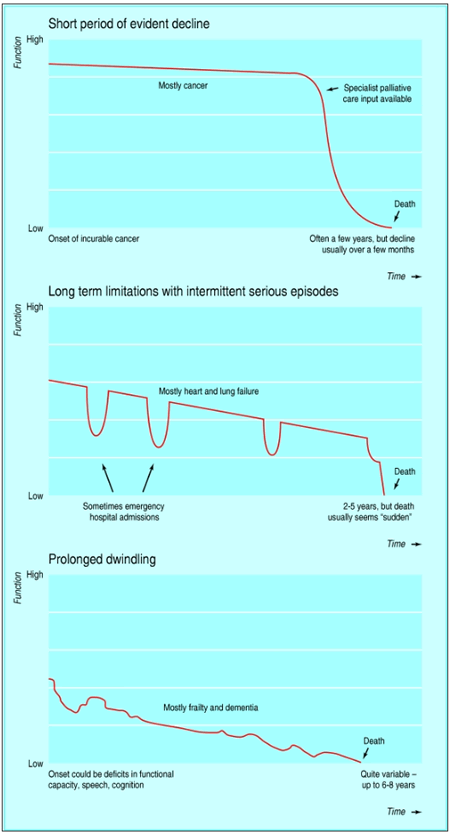 The difficulties in predicting heart failure trajectory is well evidenced. (Living & Dying Well, A National Action Plan for Palliative and end of life care in Scotland. Scottish Government (2008)).PDF
The difficulties in predicting heart failure trajectory is well evidenced. (Living & Dying Well, A National Action Plan for Palliative and end of life care in Scotland. Scottish Government (2008)).PDF
Untreated, heart failure has a poor prognosis but this can be improved considerably with early intervention and optimal treatment.
Quality of life in those living with heart failure is often worse than any other long-term condition and the condition carries a worse prognosis than many cancers (Rogers et al 2000; Juenger et al 2002).
Within 5 years of diagnosis, up to 50% of patients with heart failure will be dead. Mortality rates among newly diagnosed patients are 6% in the first month, 11% in the first 3 months and 14% in the first 6 months (Cowie et al 2000).
One of the associated challenges with these figures is the unpredictability of heart failure trajectory (see table). Heart Failure is less predictable than many other terminal diseases, comparable to other forms of progressive organ failure. There are often periods of “near death” and recovery and the course of heart failure and time spent progressing through the illness is variable for each patient.
Page last reviewed: 28 Jul 2020


